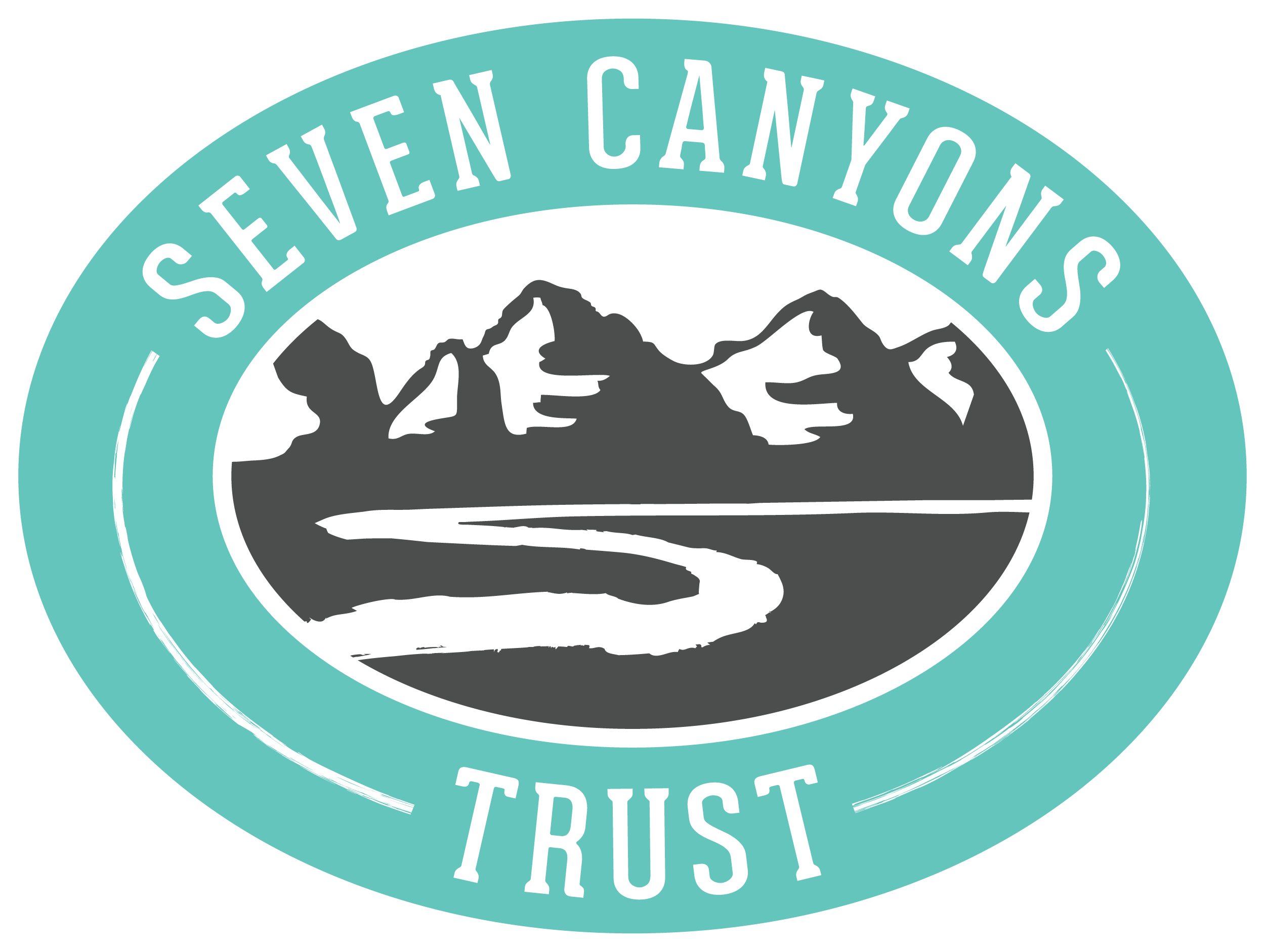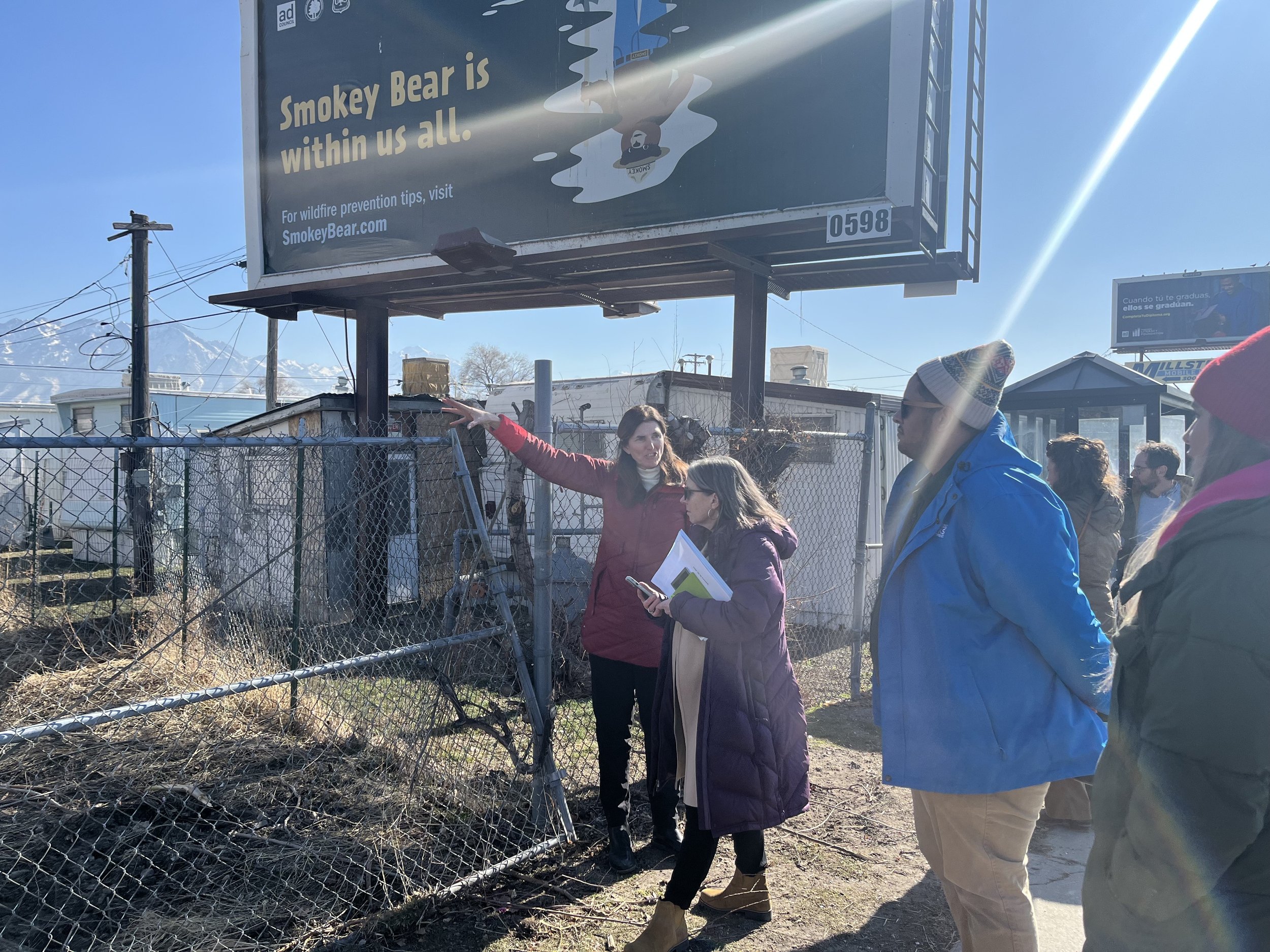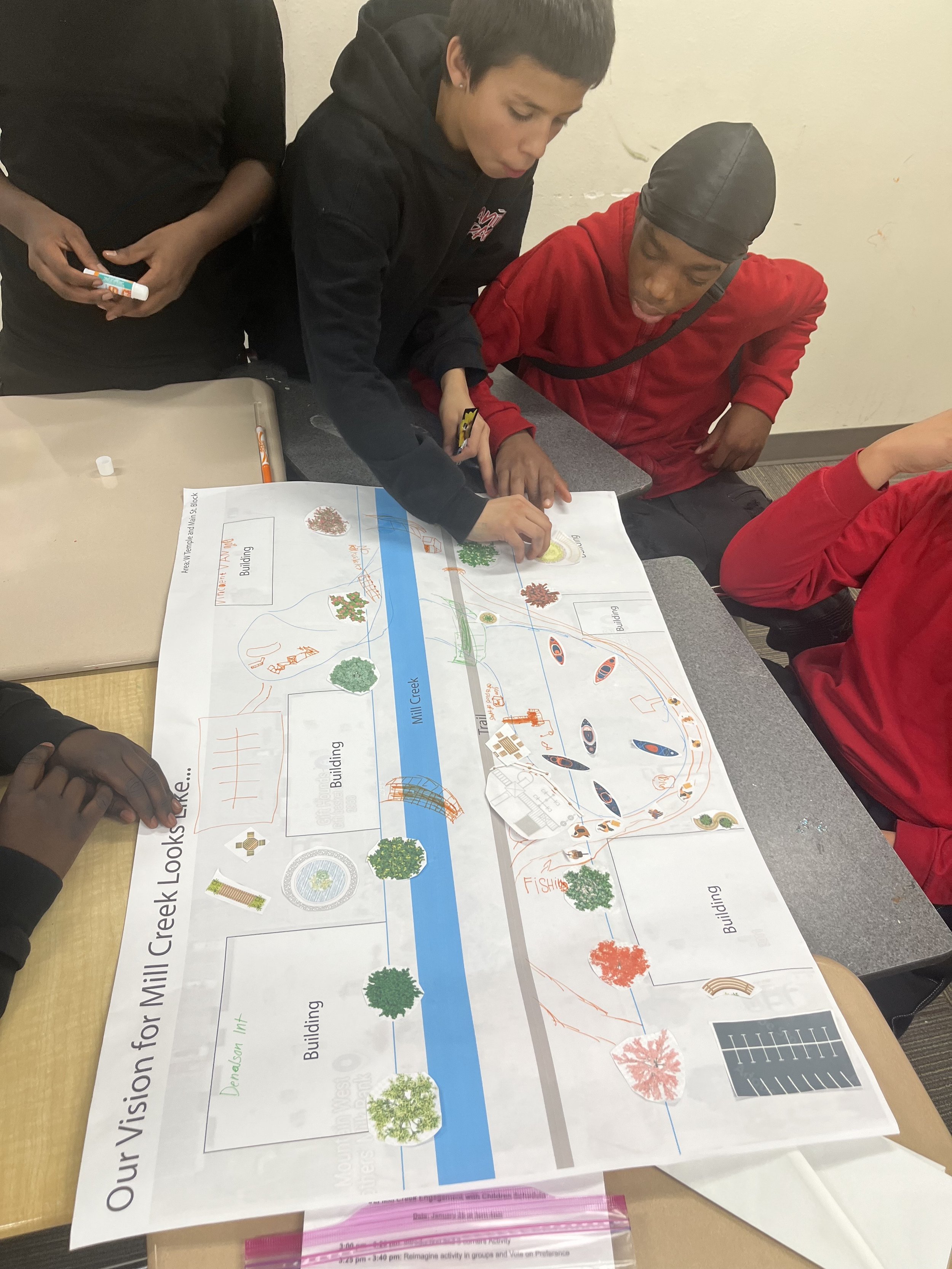Urban Land Institute Technical Assistance Panel: A Vision for Mill Creek’s Future
Authored by Ronnie Pessetto
From January 28 to 30, the Urban Land Institute (ULI) Technical Assistance Panel (TAP) brought together a panel of experts for an intensive three-day process to explore the future of Mill Creek in South Salt Lake City. This initiative marked a significant step toward transforming the creek from a hidden and underutilized waterway into a thriving, accessible community asset. With the support of urban planners, landscape architects, developers, and community leaders, the panel provided valuable insights into how Mill Creek could be restored and revitalized.
For years, much of Mill Creek had been buried beneath infrastructure or confined to concrete channels, cutting off public access and diminishing its ecological value. However, this assessment reaffirmed that the creek had the potential to become more than just a forgotten waterway—it could be a space where people connected with nature, where wildlife flourished, and where thoughtful urban planning enhanced the surrounding community.
During the intensive three-day TAP process, the panel examined key areas of the Mill Creek corridor between 200 East and 200 West, identifying strategies to improve public access, restore natural stream functions, and integrate sustainable urban development. Their recommendations emphasized the importance of daylighting sections of the creek, creating green spaces, and ensuring equitable access for all residents. The discussions also highlighted how the creek could serve as a natural corridor that strengthened the city’s resilience to climate change while fostering economic and recreational opportunities.
Representatives from the Urban Land Institute Technical Assistance Panel (TAP), South Salt Lake City, and Seven Canyons Trust exploring the site together.
To ensure a broad range of perspectives, key stakeholders were interviewed throughout the process. Their firsthand knowledge of the area and its challenges helped the panel better understand community needs, historical context, and opportunities for revitalization. These interviews played a crucial role in shaping the panel’s recommendations, ensuring they reflected the voices and priorities of those most connected to Mill Creek. A heartfelt thank you to everyone who volunteered their time, experience, and expertise to contribute to this effort.
As part of this process, we also engaged with students from Granite Park Junior High School’s after-school program to gather youth perspectives on the future of Mill Creek. Through interactive activities and discussions, the students shared their ideas on how the creek could be transformed into a space they would want to visit and enjoy. Their input reinforced the importance of creating safe, welcoming, and vibrant outdoor spaces that catered to the needs of younger generations. It was inspiring to see their enthusiasm and creativity, reminding us that restoration efforts should not only serve today’s community but also the future stewards of Mill Creek.
Students from Granite Park Junior High School's after-school program sharing their vision for the future of the Mill Creek corridor.
One of the most significant outcomes of the ULI TAP was the development of a clear, actionable roadmap for moving forward. The insights provided would serve as a guide for the City of South Salt Lake, Seven Canyons Trust, and other stakeholders to implement meaningful change. By focusing on collaboration and long-term sustainability, the process laid the foundation for turning Mill Creek into a more prominent and celebrated part of the community.
Technical Assistance Panel presenting their recommendations for Mill Creek in South Salt Lake City.
The success of the ULI TAP underscored the power of partnerships and shared vision in urban planning. The enthusiasm from both local leaders and community members demonstrated a collective commitment to restoring and activating Mill Creek in a way that would benefit both people and the environment. While there was still work to be done, this effort set the stage for future restoration projects and reinforced the idea that urban waterways, when thoughtfully planned, could become essential community assets.
As the next steps unfolded, Seven Canyons Trust remained dedicated to advancing this vision and ensuring that the ideas generated during the ULI TAP translated into real, lasting improvements for Mill Creek. The project had proven that restoration was not just about the environment—it was about creating a better quality of life for everyone who lived, worked, and spent time in South Salt Lake.
A big thank you to ULI Utah, Wasatch Front Regional Council, South Salt Lake City, and Salt Lake County for being incredible co-sponsors and supporting this important work!
(Passcode: 3^j7.wUF)



